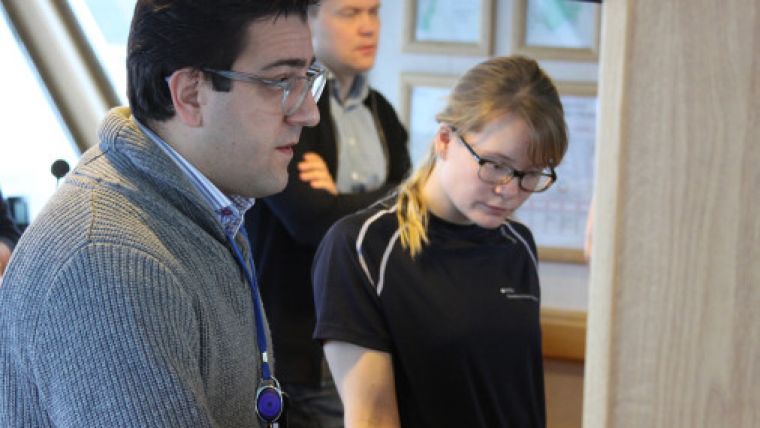Students and Researchers Test Own Control Algorithms on Industrial DP System Platform
Students and researchers from the Norwegian University of Science and Technology (NTNU) were given the opportunity to test their own dynamic positioning (DP) algorithms in a full-scale setting last week. The trials took place in the Trondheim Fjord aboard the R/V 'Gunnerus', the NTNU-owned research and education vessel to which Kongsberg donated a state-of-the-art K-Pos DP system in 2015.
Called ‘The AMOS DP Research Cruise 2016’, PhD students and researchers were given access to the K-Pos system on R/V Gunnerus for a total of six days, allowing them to fully understand how their algorithm research and development translates to real-life operations at sea. It is believed that this is the first time that access to an industrial DP system platform has been provided for research and educational purposes, which was possible due to Kongsberg Maritime’s donation of the K-Pos system and on-going support of the R/V Gunnerus.
Understand Effects and Relevance
For the first time the PhD students have been given the opportunity to test their own work in real conditions, according to Roger Skjetne, Professor at NTNU’s Department of Marine Technology and cruise leader. While the simulators of the university provide a deep insight into how different DP control algorithms will affect a DP vessel dynamically, to actually have access to a vessel with an industrial-level DP system allows the PhD students and researchers at NTNU AMOS to understand the effects and relevance that their work has on the complete DP system and operation.
The NTNU’s centre for Autonomous Marine Operations and Systems (AMOS) was awarded a Centre of Excellence (CoE) by the Research Council of Norway in 2013. AMOS is focused on creating a world-leading centre for autonomous marine operations and control systems.
Research Test Bed
In operation for NTNU since 2006, the R/V Gunnerus is equipped with the latest technology for a variety of research activities within biology, technology, geology, archaeology, oceanography and fisheries. The vessel is arranged with a wet lab, dry lab and a computer lab in addition to a large aft deck, and is a key asset in research activities for the university.
In addition to research projects, the ship is used for educational purposes and is an important platform for training courses at all levels and disciplines. As probably the most technologically advanced vessel operating on a daily basis in the Trondheim Fjord, the R/V Gunnerus is also regularly used as a highly efficient test-bed for technology developed by Kongsberg Maritime.
This R&D cruise represents a true innovation in the collaboration between industry and academia on the development of advanced vessel control technology, states Morten Breivik, head of Department of Engineering Cybernetics at NTNU. He finds that such a rapid-prototyping platform can prove to be very useful in the coming years when we will focus increasingly more on developing technology for autonomous ships.
Ensuring safety at all times, the DP algorithm trials were supervised by the R/V Gunnerus’ expert crew and a team of Kongsberg Maritime engineers.
Kongsberg is heavily involved in R&D projects within the Trondheim region, having recently played a key role in establishing the Trondheim Fjord as one of the world’s first official test-beds for autonomous ships. Kongsberg Maritime enjoys close co-operation with Norway’s largest university NTNU, and the largest independent research organisation in Scandinavia SINTEF and its subsidiary MARINTEK (The Norwegian Marine Technology Research Institute).

Value staying current with hydrography?
Stay on the map with our expertly curated newsletters.
We provide educational insights, industry updates, and inspiring stories from the world of hydrography to help you learn, grow, and navigate your field with confidence. Don't miss out - subscribe today and ensure you're always informed, educated, and inspired by the latest in hydrographic technology and research.
Choose your newsletter(s)
























